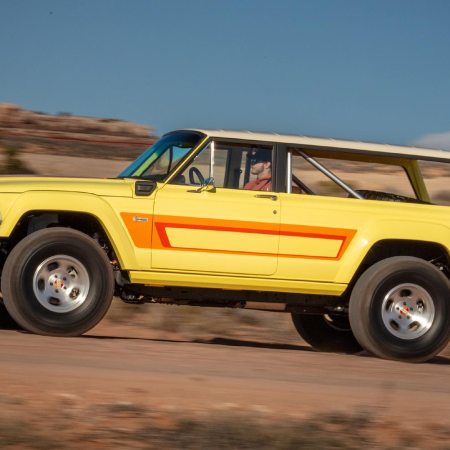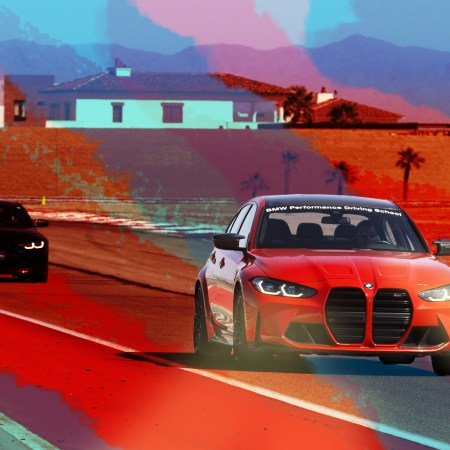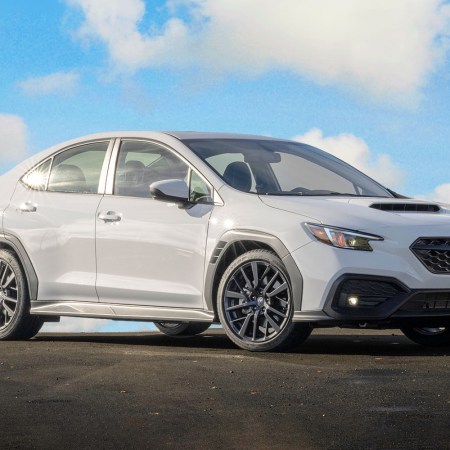When it comes to luxury roadsters — two-seat, top-down cars purposely built to ferry their well-heeled owners in al fresco comfort and style — there are perhaps none more iconic than the Mercedes-Benz SL. Those two letters, which, depending upon which Mercedes historian you ask, refer to the German equivalent of either “Sport Light” or “Super Light,” first appeared affixed to a bumper in 1954, that of the legendary 300SL “Gullwing” Coupe, long considered one of the most desirable cars of all time. The achingly gorgeous but slightly anemic 190SL debuted the next year, followed by the convertible version of the 300SL in ‘57, marking the beginning of what is now seven decades of uninterrupted production of these country-club classics.
The SL is now in its sixth generation, but early SLs continue to be coveted collector cars with prices that steadily rise. The 300SL Gullwing has been a million-dollar car since the time you could count all million-dollar cars on two hands, and the 300SL roadster has since joined it in the seven-figure club. A good 190SL now hovers at or above the six-figure range because, well, just look at it, and its successor, the W113 body style known lovingly as the “Pagoda,” currently commands an entry price of around 50 grand, taking it well out of that target group of cheap and cheerful classics.
What had historically fulfilled the sweet spot of attractive yet affordable Sunday driver was the R107 series — perhaps the most recognizable iteration of the SLs, due in large part to its multitude of co-starring roles (think Dallas, Hart to Hart, American Gigolo, etc.), and for years, a 560SL was the classic ragtop we would tell you to buy if you had a budget of right around 10 grand and couldn’t see yourself in a Miata. But in the last five years or so, the prices of R107s has hockeysticked, and examples that haven’t been neglected will now set you back two to four times what they used to. So what, then, of the next generation — the oh-so-’90s and criminally underrated R129? Well, these are still surprisingly inexpensive, and the SL’s tendency to appreciate as they age is only one of the reasons we recommend you buy one soon.
Let’s start with its looks. The R129 was penned by legendary Mercedes-Benz designer Bruno Sacco, the man who can make boxy look sexy better than anyone else, and whose “a Mercedes-Benz should always look like a Mercedes-Benz” ethos the company seems to have abandoned since his departure. The car’s handsome angles and scale are far more lithe in person than they appear in photos, and with the hardtop affixed it makes for as attractive a coupe as any to wear the three-pointed star. The interior of an SL has always been comfortable enough to make it a continental cruiser, and the R129 is no different, an “everything you need and nothing you don’t” cocoon of burled wood, plush carpets and cushy leather, refreshingly devoid of superfluous screens and gadgets. This also happens to be the final series of SLs constructed with the sort of over-engineered build quality that earned Mercedes the reputation for producing solid cars that, with the right care, will last and last.

For America, the R129 SL was available with three different engines: the six-cylinder 300SL/SL320 (Mercedes reversed the order of “SL” and the model number from 1994 onwards), the eight-cylinder 500SL/SL500 and the 12-cylinder 600SL/SL600. Unless you truly don’t care about power and just want the cheapest car out there, there’s just not enough difference in fuel economy or price to justify going for the smaller engined six-cylinder models, and considering the powerplant found inside the 600 was complicated enough to eventually power the Pagani Zonda, its propensity for expensive repair bills relegate it to the masochistic realm of the pre-owned supercar enthusiast. This leaves the magnificent 500 series as our choice for the classic cruiser for the everyman (and woman), and it’s the one you should be shopping for.
Upon its introduction at the Geneva Motor Show in 1989, the 500SL was an immediate commercial and critical success. Beyond its good looks, the 322 horses under the hood — the most to ever grace a Mercedes road car at the time — made it the first SL that really felt like it could compete with contemporary sports cars of the day in terms of performance. A ruby red 500SL made quite the stir in 1991 when Diana, Princess of Wales, chose to lease it in favor of her Jaguar XJS convertible, though she had to return it just a few months later due to national backlash that a member of the Royal Family should drive anything other than a British car. (That car now resides in the Mercedes-Benz museum right next to the Popemobile, which, depending on what you believe, is a far better fate than another Mercedes involving Diana and the embarrassment of the Royal Family.)
Over its 13-year run, the 500SL/SL500 went through a number of cosmetic and mechanical changes, which for ease of argument we’ll break down into three distinct categories: the early cars, the mid-year cars and the late-year cars. Each category has its admirers, and while you can’t really go wrong with any, which to choose comes down to a matter of personal taste.

The early cars, which covers the 1990-1995 model years, are the purists’ choice, as they are most faithful to the design which Bruno Sacco himself referred to as “the most perfect design of my career.” On the exterior, early cars are most recognized by the lower-body cladding being painted in a matte finish that was often a different color than the rest of the car, though finding ones which have been repainted in a single body color in the decades since is not uncommon. Other visual clues of the early cars are three rather than two intake vents behind the front wheels. Mechanically, the early cars had a 5.0 liter, 32 Valve M119 engine mated to a four-speed hydraulic transmission borrowed from Porsche’s 928. On paper, these were actually the most powerful of the 500 series, as a revision in fuel injection to solve some issues with the earliest engines resulted in a reduction of horsepower from 322 to 315 in 1993. The 1996 model year marks the beginning of the “middle-year” cars, which lasted until 1998. Gone was the two-tone paint job, as well as the four-speed transmission in favor of a five-speed, electronic automatic. There are many who feel that the combination of the five-speed box and M119 engine make these three model years the most coveted. The 1999 model year brought along an entirely new engine and ushered in the later-year period of the cars, which would last until its final run in 2002. While the new M113 engine was even further down in power, clocking in at 302, it created more torque at the low RPM range to make puttering around town a bit more lively.
Regardless of which era you choose, maintenance records and a good pre-purchase inspection are key when shopping for an R129. These cars were built for the long haul, so an example with 130,000+ miles but a documented service history shouldn’t be overlooked for a lower-mileage example with no records. Early cars were prone to wiring harness issues, you’ll want to see that it’s been replaced and suspension components should be considered consumables considering the relatively heavy weight of a car known as “Super Light.” Hydraulic mechanisms for the automatic folding soft top should also be examined, as R129 owners will warn you of the “green storm” when the hydraulic fluid of neglected systems spontaneously rain down upon driver and passenger alike. While concours-ready examples of later SL500s are regularly asking $25K+ these days, good solid drivers can still be found in the $10k-$12K range, and occasionally go for much less. Do your homework and shop around: these cars aren’t exactly rare, but put one in your garage sooner rather than later, as history has shown us that the values of classic SLs are only going to rise.
This article was featured in the InsideHook newsletter. Sign up now.






















